Related Research Articles

The jaguar is a large cat species and the only living member of the genus Panthera native to the Americas. With a body length of up to 1.85 m and a weight of up to 158 kg (348 lb), it is the biggest cat species in the Americas and the third largest in the world. Its distinctively marked coat features pale yellow to tan colored fur covered by spots that transition to rosettes on the sides, although a melanistic black coat appears in some individuals. The jaguar's powerful bite allows it to pierce the carapaces of turtles and tortoises, and to employ an unusual killing method: it bites directly through the skull of mammalian prey between the ears to deliver a fatal blow to the brain.

The tiger is the largest living cat species and a member of the genus Panthera. It is most recognisable for its dark vertical stripes on orange fur with a white underside. An apex predator, it primarily preys on ungulates, such as deer and wild boar. It is territorial and generally a solitary but social predator, requiring large contiguous areas of habitat to support its requirements for prey and rearing of its offspring. Tiger cubs stay with their mother for about two years and then become independent, leaving their mother's home range to establish their own.
The term "big cat" is typically used to refer to any of the five living members of the genus Panthera, namely the tiger, lion, jaguar, leopard, and snow leopard, as well as the non-pantherine cheetah and cougar.

The Bengal tiger is a population of the Panthera tigris tigris subspecies and the nominate tiger subspecies. It ranks among the biggest wild cats alive today. It is considered to belong to the world's charismatic megafauna.

The Caspian tiger was a Panthera tigris tigris population native to eastern Turkey, northern Iran, Mesopotamia, the Caucasus around the Caspian Sea, Central Asia to northern Afghanistan and the Xinjiang region in western China. Until the Middle Ages, it was also present in southern Russia. It inhabited sparse forests and riverine corridors in this region until the 1970s. This population was regarded as a distinct subspecies and assessed as extinct in 2003.
Yellowstone to Yukon Conservation Initiative or Y2Y is a transboundary Canada–United States not-for-profit organization that aims to connect and protect the 2,000 miles Yellowstone-to-Yukon region. Its mission proposes to maintain and restore habitat integrity and connectivity along the spine of North America's Rocky Mountains stretching from the Greater Yellowstone ecosystem to Canada's Yukon Territory. It is the only organization dedicated to securing the long-term ecological health of the region.
The Mesoamerican Biological Corridor (MBC) is a region that consists of Belize, Guatemala, El Salvador, Honduras, Nicaragua, Costa Rica, Panama, and some southern states of Mexico. The area acts as a natural land bridge from South America to North America, which is important for species who use the bridge in migration. Due to the extensive unique habitat types, Mesoamerica contains somewhere between 7 and 10% of the world’s known species.
In landscape ecology, landscape connectivity is, broadly, "the degree to which the landscape facilitates or impedes movement among resource patches". Alternatively, connectivity may be a continuous property of the landscape and independent of patches and paths. Connectivity includes both structural connectivity and functional connectivity. Functional connectivity includes actual connectivity and potential connectivity in which movement paths are estimated using the life-history data.

The Indian leopard is a subspecies of the leopard that is widely distributed on the Indian subcontinent and is threatened by illegal trade of skins and body parts, and persecution due to human-leopard conflict and livestock depredation. A national census of leopards around tiger habitats was carried out in India in 2014, except the northeast. 7,910 individuals were estimated in surveyed areas and a national total of 12,000–14,000 speculated.
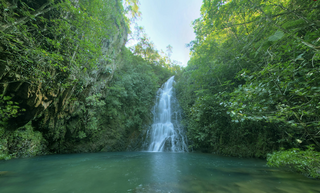
The Cockscomb Basin Wildlife Sanctuary is a nature reserve in the Stann Creek District of south-central Belize. It was established to protect the forests, fauna and watersheds of an approximately 400 square kilometres (150 sq mi) area of the eastern slopes of the Maya Mountains.
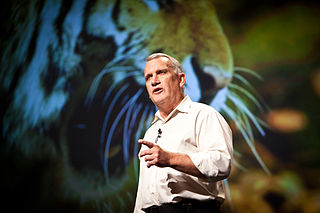
Alan Robert Rabinowitz was an American zoologist who served as the president, CEO, and chief scientist at Panthera Corporation, a nonprofit conservation organization devoted to protecting the world's 40 wild cat species. Called the "Indiana Jones of Wildlife Protection" by Time, he studied jaguars, clouded leopards, Asiatic leopards, tigers, Sumatran rhinos, bears, leopard cats, raccoons, cervidae, and civets.

Tiger hunting is the capture and killing of tigers. Humans are the tigers' most significant predator, and illegal poaching is a major threat to the tigers. The Bengal tiger is the most common subspecies of tiger, constituting approximately 80% of the entire tiger population in Indian Sub-Continent, and is endemic to Bangladesh, Bhutan, Myanmar, Nepal, and India. Tigers have mythological, cultural and religious significance in these countries. Foreign invaders saw hunting of tigers as a symbol of masculinity and an adventurous sporting event. It has been hunted in these countries for centuries. In 1924, the tiger population in Asia was estimated to be more than 100,000. However, within less than a hundred years, it had declined to fewer than 3,200. Tiger has historically been a popular big game animal and has been hunted for prestige as well as for taking trophies. Extensive poaching has continued even after such hunting became illegal and legal protection was provided to the tiger. Now a conservation-reliant endangered species, the majority of the world's tigers live in captivity. Tigers were once considered to be harder to hunt than lions, due to their habit of living alone in dense cover and not noisily asserting their presence with roars as often.
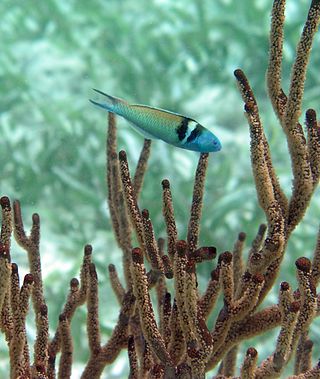
Since declaring independence in 1981, Belize has enacted many environmental protection laws aimed at the preservation of the country's natural and cultural heritage, as well as its wealth of natural resources. These acts have established a number of different types of protected areas, with each category having its own set of regulations dictating public access, resource extraction, land use and ownership.
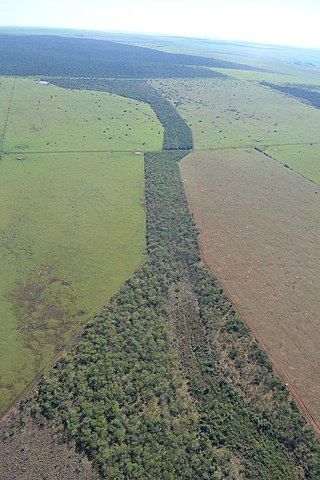
A wildlife corridor, habitat corridor, or green corridor is an area of habitat connecting wildlife populations separated by human activities or structures. This allows an exchange of individuals between populations, which may help prevent the negative effects of inbreeding, and reduced genetic diversity that often occur within isolated populations. Corridors may also help facilitate the re-establishment of populations that have been reduced or eliminated due to random events. This may potentially moderate some of the worst effects of habitat fragmentation, whereas urbanization can split up habitat areas, causing animals to lose both their natural habitat and the ability to move between regions to access resources. Habitat fragmentation due to human development is an ever-increasing threat to biodiversity, and habitat corridors serve to manage its effects.
The tiger is an iconic species. Tiger conservation attempts to prevent the animal from becoming extinct and preserving its natural habitat. This is one of the main objectives of the international animal conservation community. The Convention on International Trade in Endangered Species of Wild Fauna and Flora (CITES) has played a crucial role in improving international efforts for tiger conservation.

Parc des Félins is a zoological park in France dedicated to the breeding and conservation of wild members of the cat family. It is located in the commune of Lumigny-Nesles-Ormeaux in Seine-et-Marne, about 53.6 km (33.3 mi) southeast of Paris.

Buenos Aires National Wildlife Refuge provides 117,107 acres (47,392 ha) of habitat for threatened and endangered plants and animals. This refuge, in Pima County, Arizona, was established in 1985.

Panthera Corporation, or Panthera, is a charitable organization devoted to preserving wild cats and their ecosystems around the globe. Founded in 2006, Panthera is devoted to the conservation of the world’s 40 species of wild cats and the vast ecosystems they inhabit. Their team of biologists, data scientists, law enforcement experts and wild cat advocates studies and protects the seven species of big cats: cheetahs, jaguars, leopards, lions, pumas, snow leopards and tigers. Panthera also creates targeted conservation strategies for the world’s most threatened and overlooked small cats, such as fishing cats, ocelots and Andean cats. The organization has offices in New York City and Europe, as well as offices in Mesoamerica, South America, Africa and Asia.
Lost Land of the Tiger is a three-part nature documentary series produced by the BBC Natural History Unit which follows a scientific expedition to the Himalayan kingdom of Bhutan. The expedition team is made up of specialist zoologists, explorers and the BBC crew. Together, they explore wilderness areas from the lowland jungles to high-elevation slopes, in search of rare animals and plants. The focus of the expedition is to investigate the status of the tiger in Bhutan, where little is known of the cat's distribution or population density. Evidence of a healthy population of tigers would elevate Bhutan's importance as a sanctuary for this endangered species. It would also support tiger conservationist Dr. Alan Rabinowitz's proposal for a vast protected corridor linking the fragmented pockets of tiger habitat which lie to the south of the Himalayas.
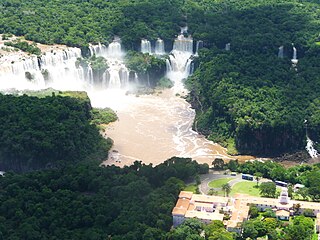
The Trinational Biodiversity Corridor is a proposed ecological corridor that would link protected areas in the Alto Paraná Atlantic forests ecoregion in Brazil, Paraguay and Argentina.
References
- ↑ "Jaguars". National Geographic . Archived from the original on 2011-09-17. Retrieved 2010-12-12.
- ↑ "Jaguar Corridor Initiative". Archived from the original on March 15, 2012. Retrieved March 16, 2012.
- ↑ White, Mel (March 2009). "The Path of the Jaguar". National Geographic Magazine.
- ↑ Rabinowitz, Alan (April 2010). "A range-wide model of landscape connectivity and conservation for the jaguar, Panthera onca". Biological Conservation. 143 (4): 939–945. Bibcode:2010BCons.143..939R. doi:10.1016/j.biocon.2010.01.002.